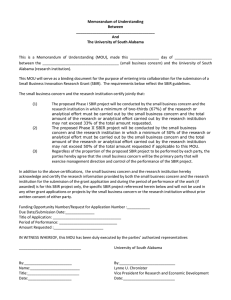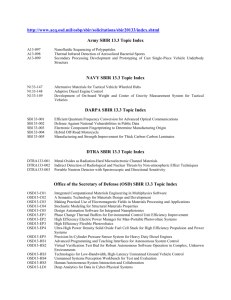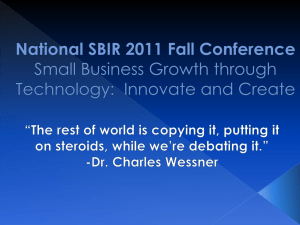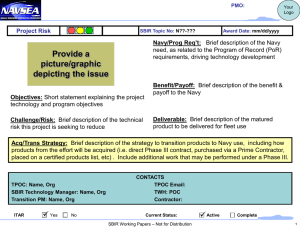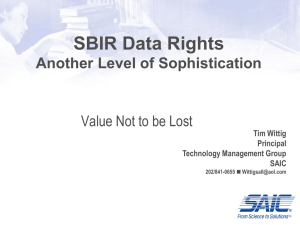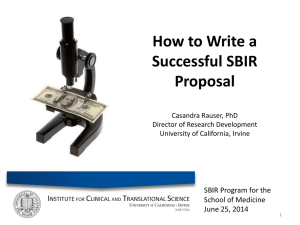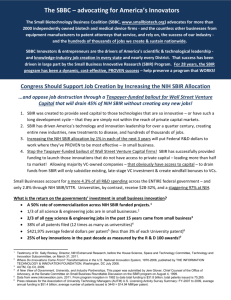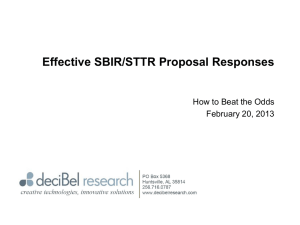Alcohol Screening, Brief Intervention and Referral (SBIR)
advertisement
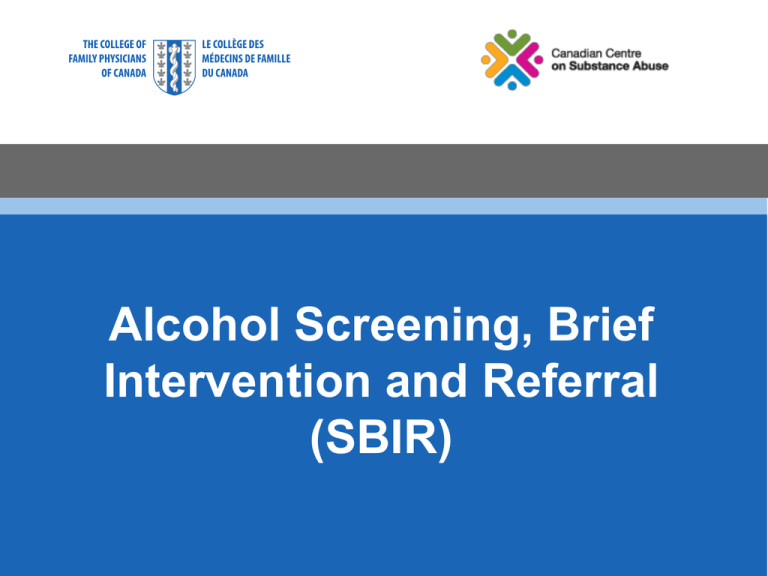
Alcohol Screening, Brief Intervention and Referral (SBIR) Disclosures • Lundbeck Canada Objectives • Review the genesis of Canada’s SBIR initiative • Explore the content and format • Critique the approach Alcohol SBIR CCSA and CFPC Development and Background Canada’s National Alcohol Strategy • Led by the Canadian Centre on Substance Abuse • Developed a comprehensive, collaborative stakeholder endorsed set of 41 recommendations • Reducing Alcohol Related Harm in Canada: Toward a Culture of Moderation (CCSA 2007) Alcohol SBIR: NAS Recommendations • #7 Develop integrated, culturally sensitive screening, brief intervention and referral (SBIR) tools and strategies. • #9 Improve access to addiction services in isolated, rural and remote regions of Canada, and for vulnerable populations. Development and Implementation • CCSA contracted Dr. David Brown PhD to develop and pilot test a prototype • Prototype refined through IT consultants, focus groups and beta testing in conjunction with the College of Family Physicians of Canada (CFPC) • CFPC now maintains the site, with open access, and have assumed responsibility for further KE activity Challenges to Primary Care SBIR Uptake • Need for national Low Risk Drinking Guidelines • Credible information and endorsement • Time: seamless inclusion in busy practices Challenges to Primary Care SBIR Uptake • Comfort with the process and inclusion of Motivational Interviewing • Ability to address alcohol abuse and dependency • Appropriate technology and resources for both the practice and patients (Lit Review and Practitioner Feedback) The Site The Site • College of Family Physicians of Canada, open source www.sbir-diba.ca Alcohol SBIR The site, LRDG and Standard Drinks Alcohol SBIR Menu Orientation Alcohol SBIR Screening and Assessment Alcohol SBIR Brief Intervention and Referral Factors Related to Improvement Factors Related to Improvement • • • • 30% Therapeutic Relationship 15% Technique 15% Expectancy 40% Extra-therapeutic Factors (Asay & Lambert 1999) Stages of Change FactorsRelapse Related to Improvement Pre-contemplation Success Maintenance Action Contemplation Determination Prochaska & Di Clemente, Transtheoretical Model of A Motivational Approach • Start wherever the person is at: acknowledge their reality. • Roll with resistance. • Avoid arguments or a power struggle. • Be persuasive, not confrontational or abusive. (From Miller) Alcohol SBIR Brief Intervention, Follow up and Support for Elevated Risk Alcohol SBIR Brief Intervention, Follow up and Support for Alcohol Abuse Alcohol SBIR Brief Intervention, Referral, Follow up and Support for Alcohol Dependency Objectives Accomplished • Review the genesis of Canada’s SBIR initiative • Explore the content and format • Critique the approach References & Recommended Reading References & Recommended Reading • American Society of Addiction Medicine, www.ASAM.org • Canadian Society of Addiction Medicine, www.CSAM.org • Canadian Centre on Substance Abuse, www.CCSA.ca • National Institute of Drug Abuse, www.NIDA.org References & Recommended Reading References & Recommended Reading • National Native Addiction Partnership Foundation, www.nnapf.org • Wellbriety Movement, www.whitebison.org • Mate, Gabor. In The Realm of Hungry Ghosts. A.A.Knopf Canada. 2008 Thank you Questions? Contact: P.R. Butt, MD, CCFP(EM), FCFP Assoc. Professor, Family Medicine, University of Saskatchewan peter.butt@usask.ca
